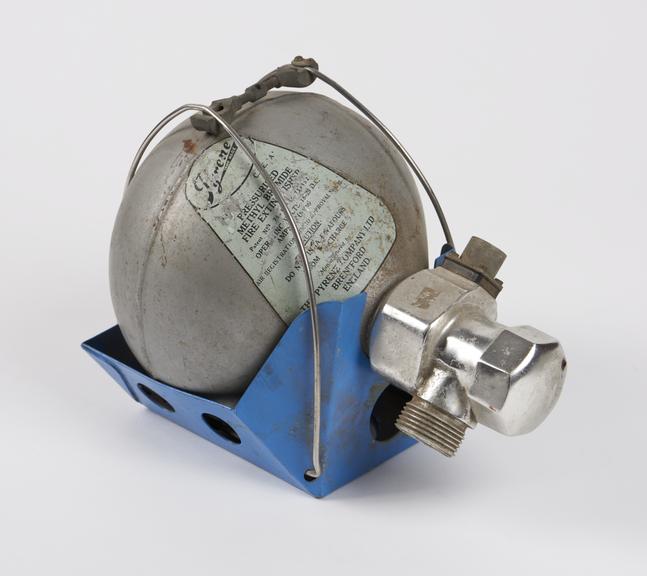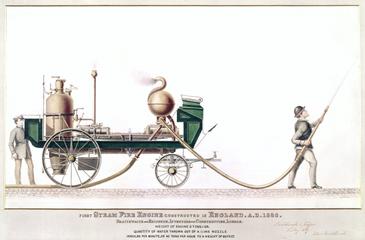
Aircraft fire extinguisher by the Pyrene Company
- Made:
- 1940-1970

Fire extinguisher type CPE 'A' Pressurized methyl Bromide, electrical 24 V operation for aircraft use. By the Pyrene Company Ltd, Brentford, with mounting bracket, silver finish. Chubb Museum Red '48' sticker.
Methyl Bromide was first used as an extinguishing agent in the 1920s and continued to be used until the 1960s when it fell out of use due to its high level of toxicity. This particular model was produced for use on aircraft, an enclosed space which would increase the danger of methyl bromide’s toxicity. However, the agent was highly effective at extinguishing fires, as it would reduce the oxygen content of the air to a level that would inhibit flames.
The Pyrene Company began in 1907 by a Scottish engineer in Delaware, USA, and did not have a presence in the UK until 1914 when the American Wallace Phillips who marketed their iconic ‘pump’ extinguisher. Pyrene continued to produce fire extinguishers in the UK until 1967, when they were brought out by Chubb and Sons, although the brand name continued to be used until around 1971. This extinguisher was likely produced before the takeover.
The Pyrene Company’s factory still stands in Brentford’s Great West Road, with a Grade II listed status. It was designed by Wallis, Gilbert and Partners in 1928.




